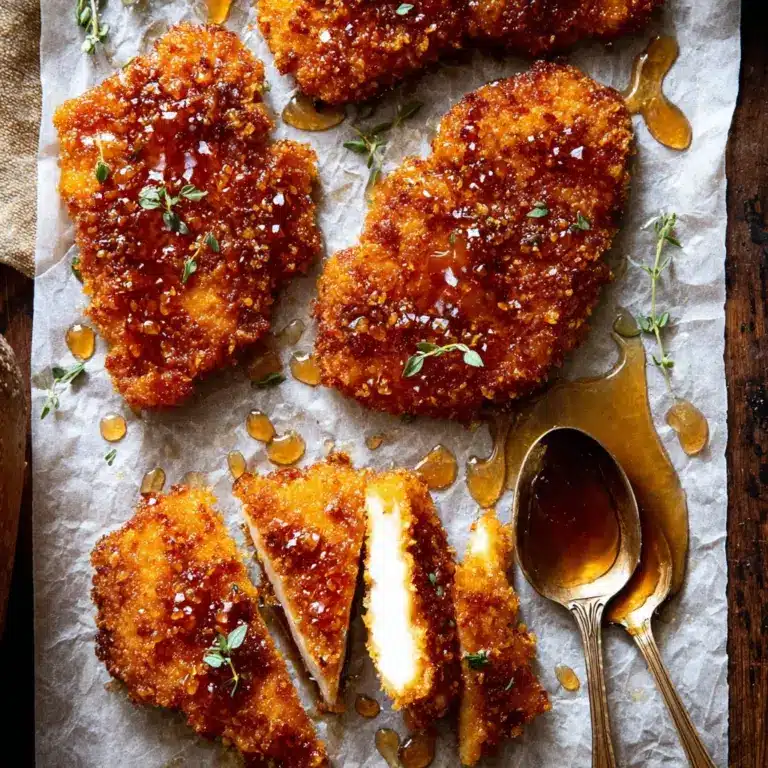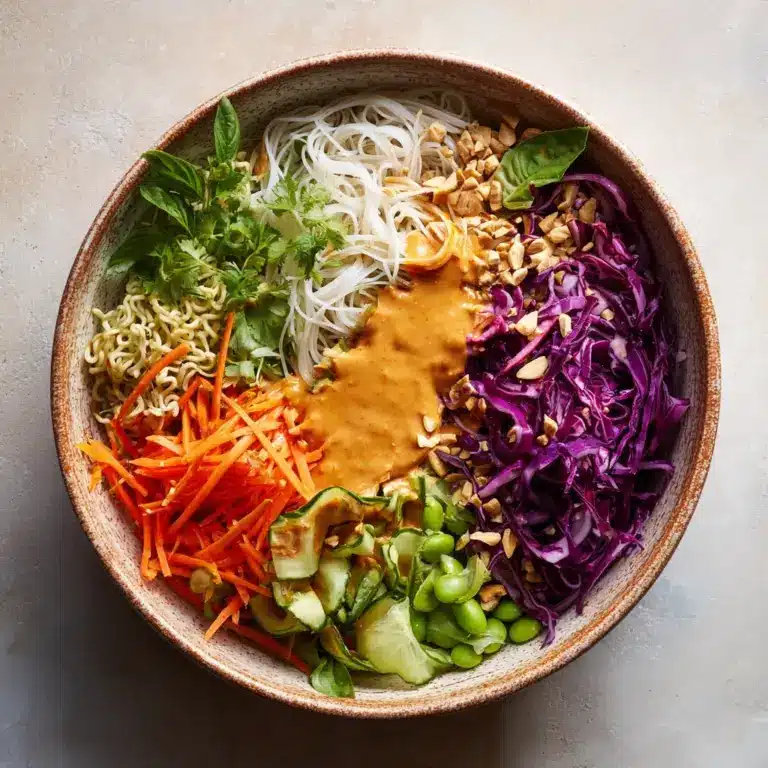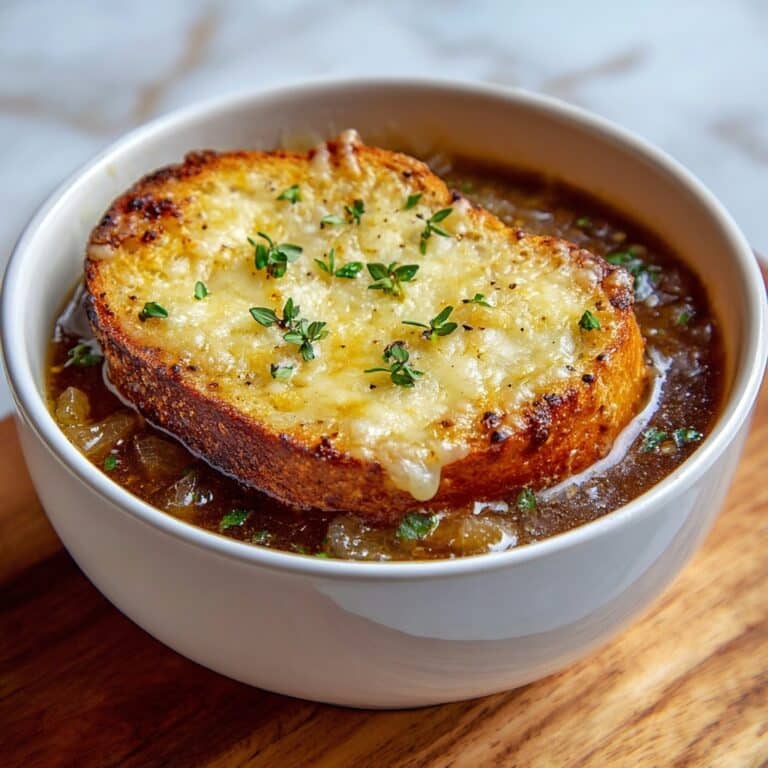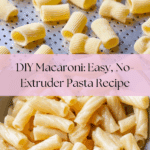Handmade macaroni (no extruder) Recipe
Imagine sitting down to a plate of tender, slightly chewy pasta, made entirely by hand in your own kitchen, no fancy machines required. That’s the magic of handmade macaroni (no extruder). Not only does this recipe deliver absolute comfort, but it also makes pasta night an adventure and a celebration of tradition. The result is something rustic and irresistible—each bite proof of the joy that comes from working simple ingredients into something extraordinary.
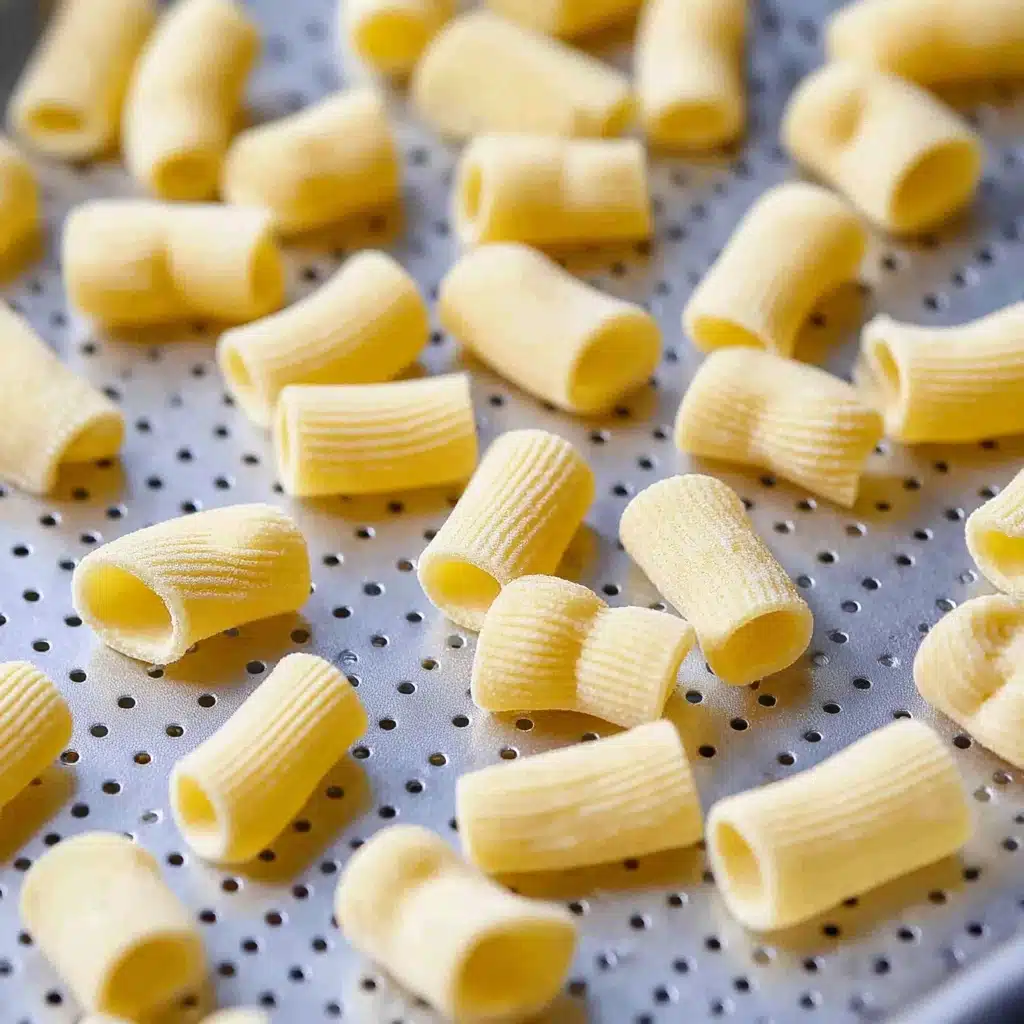
Ingredients You’ll Need
You won’t believe how just a handful of ingredients can transform into the best handmade macaroni (no extruder) you’ve ever tasted! Each element has its own role in building that perfect texture and flavor, so don’t be tempted to cut corners or swap too much around. Here’s what you’ll need and why:
- Semolina flour (200 grams): Classic for pasta, this hard wheat flour is the key to macaroni’s structure and gentle bite.
- Water (85 grams): Just the right amount to bring the dough together without making it sticky—precision here ensures perfect texture.
- Olive oil (15 grams): Adds a subtle richness and keeps your dough silky and manageable as you work it by hand.
How to Make Handmade macaroni (no extruder)
Step 1: Mix & Roll Out the Dough
Start by pouring your semolina flour directly onto your work surface (or into a trusty large bowl if you’re feeling cautious about flour clouds everywhere). Make a well in the center and slowly drizzle in most of the water, stirring gently with a fork. Add olive oil in the same way. As the dough comes together, set the fork aside and dive in with your hands! Pull the dough into a rough ball, adding the last splash of water only if needed for any lingering dry bits.
Step 2: Knead for the Perfect Texture
This is where handmade macaroni (no extruder) reveals its best self! Firmly press the dough with the heel of your hand, fold it over, turn, and repeat. After about five solid minutes, you should have a smooth, elastic ball. Don’t rush this part—kneading builds the gluten that gives your pasta its signature chewy texture. Once you’re there, wrap the dough in plastic or a damp towel and let it rest for at least 20 to 30 minutes so the flour can fully hydrate.
Step 3: Shape the Dough
Once rested, roll your dough out to about 1 mm thick using a rolling pin. Even if you’re used to store-bought pasta, nothing beats the tactile satisfaction of this step. Cut the dough into roughly 2.5 cm squares (don’t worry about perfect precision—handmade macaroni (no extruder) is meant to have character). Now, use a metal skewer, chopstick, or wooden dowel to roll each square into a small tube. Gently slide the shaped macaroni off onto a floured towel or wire rack to dry a bit while you work through the batch.
Step 4: Dry or Cook
You can let your macaroni dry for later, or jump right into cooking. If drying, space them out on a tray to air-dry for a few hours or overnight, depending on humidity. For fresh cooking, bring a generously salted pot of water to a rolling boil, then add the pasta and cook for three minutes or until they’re fully cooked through and delightfully toothsome. Drain and toss straight away with your favorite sauce—or maybe just a splash of good olive oil.
How to Serve Handmade macaroni (no extruder)
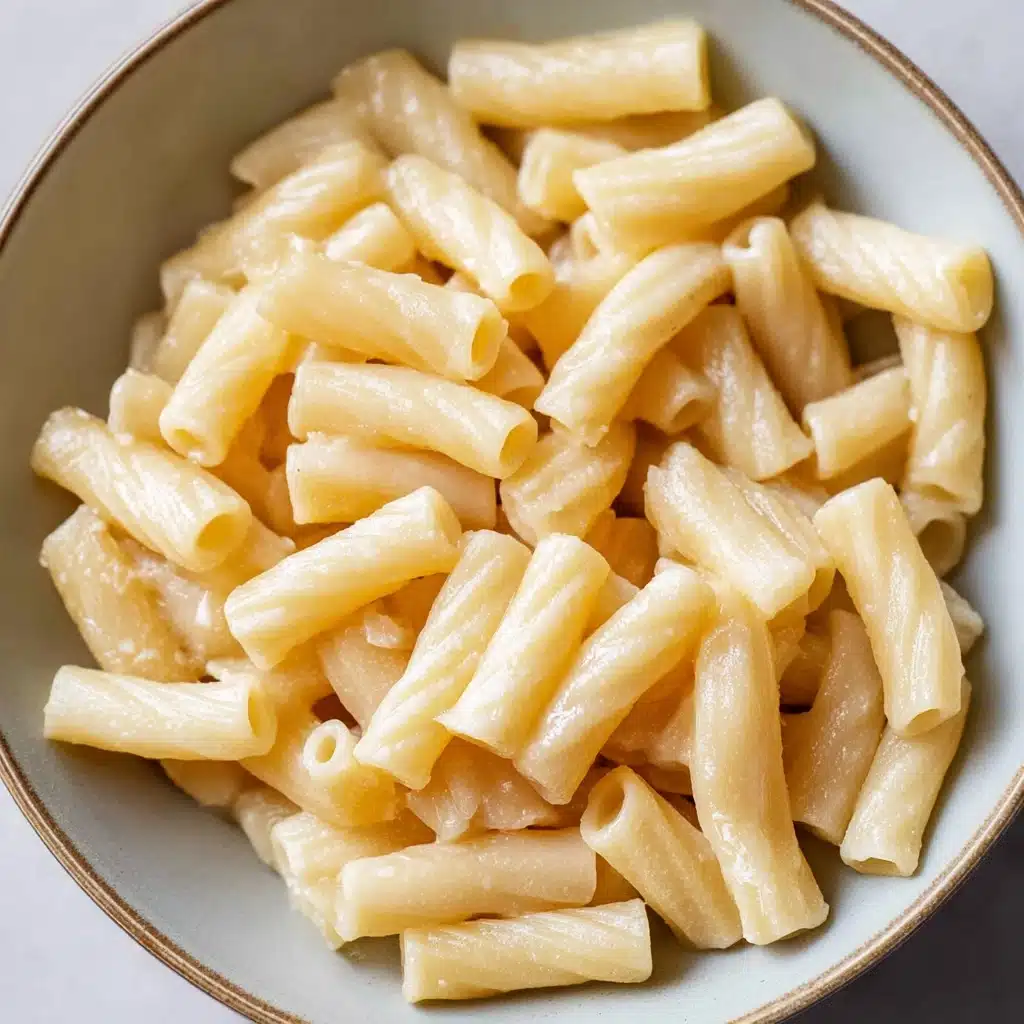
Garnishes
A generous sprinkle of freshly grated Parmigiano-Reggiano is always a win. For extra flair, scatter some chopped fresh herbs like basil or parsley. Don’t underestimate a drizzle of robust extra virgin olive oil and a twist of cracked black pepper—these little touches elevate handmade macaroni (no extruder) from homey to heavenly.
Side Dishes
Pair your pasta with a crisp, tangy green salad or a pile of garlicky roasted vegetables to amp up the freshness factor. Warm crusty bread will soak up every drop of sauce. For festive meals, a simple antipasto with olives and cured meats makes the whole experience feel restaurant-worthy.
Creative Ways to Present
For family-style flair, serve handmade macaroni (no extruder) in a big platter right in the center of the table and let everyone help themselves. If you’re feeling fancy, portion into shallow bowls and nestle with vibrant sauce, then top each one with a sprig of basil. Kids (and adults!) will love watching the sauce settle into all those hand-shaped tubes—pasta with personality.
Make Ahead and Storage
Storing Leftovers
If you find yourself with extra cooked macaroni, transfer them to an airtight container and refrigerate for up to three days. A quick splash of olive oil before storing helps prevent sticking. Remember, since these noodles absorb sauce and flavors, leftovers often taste even better the next day!
Freezing
Handmade macaroni (no extruder) can absolutely be frozen. Spread uncooked pasta tubes in a single layer on a tray and freeze until solid, then transfer to a freezer bag for up to two months. There’s no need to thaw: just drop them straight into boiling water and cook as usual, adding a minute or two to the cooking time.
Reheating
For best results, reheat gently in a skillet with a splash of water or extra sauce. If you’re microwaving, sprinkle a little water over the pasta and cover before heating in bursts, stirring in between to prevent any tough spots. The delicate nature of handmade macaroni (no extruder) means gentle heat preserves its lovely texture.
FAQs
Can I use all-purpose flour instead of semolina?
You can, but semolina really gives the handmade macaroni (no extruder) its signature chew and golden color. All-purpose flour makes for a softer, paler result, so for an authentic experience try to stick with semolina if possible.
Do I really need a pasta machine?
Nope! That’s the beauty of this recipe. All you need is a rolling pin (or even a sturdy bottle in a pinch) and a simple tool to roll the tubes. Handmade macaroni (no extruder) shines because it’s accessible—no specialist gadgets required.
How do I know if my dough is kneaded enough?
The dough should feel smooth and slightly springy. If it tears when you roll or shape it, it might need a touch more kneading. A well-kneaded dough rolls out easily and doesn’t stick to your hands or the counter.
Can I make the pasta dough ahead?
Absolutely! Wrap your dough tightly and refrigerate for up to 24 hours. Let it rest at room temperature for about 20 minutes before rolling so it’s pliable and easy to shape when you’re ready to make your handmade macaroni (no extruder).
Why is my pasta sticking together after cooking?
Fresh handmade macaroni (no extruder) can be stickier than dried pasta. Make sure your cooking water is at a full rolling boil and well salted, stir the macaroni gently in the first minute, and drain promptly. If you’re not adding it directly to sauce, a little olive oil helps keep the pieces separate.
Final Thoughts
There’s something deeply satisfying about transforming three humble ingredients into a bowl of truly special pasta, and this handmade macaroni (no extruder) recipe captures that magic perfectly. Give it a try the next time you feel like making dinner memorable—you might just fall in love with the process, and the results will absolutely wow anyone lucky enough to pull up a chair at your table.
Print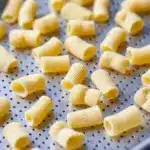
Handmade macaroni (no extruder) Recipe
- Total Time: 1 hour
- Yield: 4 servings 1x
- Diet: Vegetarian
Description
Learn how to make delicious handmade macaroni from scratch without the need for an extruder. This recipe yields tender, flavorful macaroni that will elevate any pasta dish.
Ingredients
Dough:
- 200 grams semolina flour
- 85 grams water
- 15 grams olive oil
Instructions
- Mix & roll out the dough: Pour the semolina flour onto a work surface. Create a well and mix in water and olive oil. Knead for 5 minutes. Rest for 20-30 minutes.
- Shape: Roll out dough, cut into squares, roll into tubes.
- Cook: Boil macaroni for 3 minutes. Drain and add to sauce.
Notes
- For best results, ensure the dough is well-kneaded and rested.
- Adjust cooking time based on preferred pasta texture.
- Prep Time: 45 minutes
- Cook Time: 3 minutes
- Category: Pasta
- Method: Mixing, Rolling, Boiling
- Cuisine: Italian
Nutrition
- Serving Size: 1 serving
- Calories: 285 kcal
- Sugar: 1g
- Sodium: 2mg
- Fat: 4g
- Saturated Fat: 1g
- Unsaturated Fat: 3g
- Trans Fat: 0g
- Carbohydrates: 54g
- Fiber: 2g
- Protein: 8g
- Cholesterol: 0mg
Keywords: handmade macaroni, pasta recipe, fresh pasta, homemade pasta

